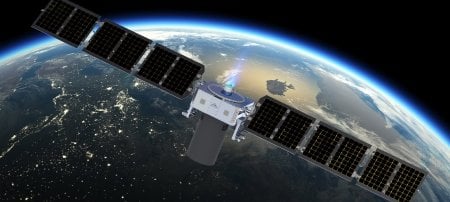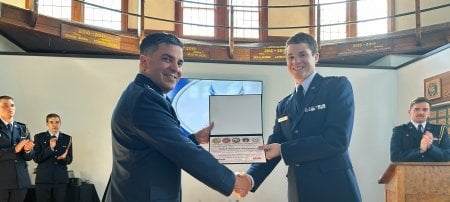To the Moon: Michigan Tech Alumnus Contributes to Lunar Mission

Aboard a spacecraft orbiting the moon is a little bit of Brandon Dilworth.
His body is comfortably here on Earth. But for the last several years, Dilworth has poured all his professional skill and passion into a game-changing scientific project that is now hitching a ride on the Lunar Atmosphere and Dust Environment Explorer. Launched by NASA Sept. 6. LADEE (dubbed “laddie”) left its Earth orbit Oct. 2 and entered a lunar orbit Oct. 6. Soon, the technical project that Dilworth has been working on at MIT Lincoln Laboratory for the last four years will spring into action.
“I’ve supported the Lunar Laser Communication Demonstration since my first day at Lincoln,” he said. “I got my PhD in August 2009, drove out to Massachusetts, and started work the next Monday.”
Since Dilworth earned his master’s and doctorate in mechanical engineering at Michigan Tech, he has been working on equipment that will revolutionize space communication.
Currently, NASA communicates with spacecraft using radio waves, like those received by car radios (but with different frequency bands). The agency is planning to shift to a laser-based communication system. That, says Dilworth, will be as different from radio as fiber-optic cable is from the old copper wires that once carried phone messages.
“Wavelengths of light can transfer information much faster than radio,” he said, using less energy and lighter, smaller equipment.
The Lunar Laser Communication Demonstration was developed by Lincoln Laboratory in cooperation with NASA’s Ames Research Center, in Mountain View, Calif. and NASA’s Goddard Spaceflight Center, in Maryland. The system will send data from the LADEE spacecraft via laser to a terminal in White Sands, N.M., illustrating that the new optical communication technology will actually work.
For the last several years, Dilworth has been developing test equipment that verified that the project’s optics would remain perfectly stable as LADEE orbits the moon. He also helped design a subsystem of the optical module and was involved with integrating and testing of the entire laser communication system.
“It has been pretty exciting,” said Dilworth. “I had my hand literally touching the spacecraft before it went up. It’s very much massaged my nerd ego.”
There’s another reason Dilworth is happy. “What's fun for me is that I’m allowed to talk about it in the public domain, since NASA is the sponsor,” he said.
LADEE’s near-midnight launch, aboard a repurposed intercontinental ballistic missile, lit up most of the Eastern Seaboard, and it was gratifying to be part of a project that attracted eyeballs from Maine to South Carolina. Dilworth was occupied elsewhere, but he doesn’t regret missing the show.
“I didn’t get to see, but that was OK,” he said. “I was driving to the hospital to await our newborn baby boy.”
Michigan Technological University is an R1 public research university founded in 1885 in Houghton, and is home to nearly 7,500 students from more than 60 countries around the world. Consistently ranked among the best universities in the country for return on investment, Michigan's flagship technological university offers more than 120 undergraduate and graduate degree programs in science and technology, engineering, computing, forestry, business, health professions, humanities, mathematics, social sciences, and the arts. The rural campus is situated just miles from Lake Superior in Michigan's Upper Peninsula, offering year-round opportunities for outdoor adventure.




Comments